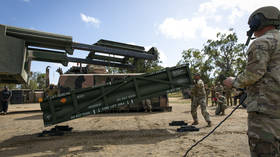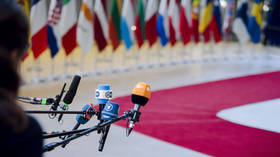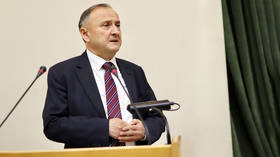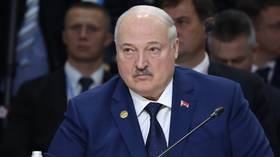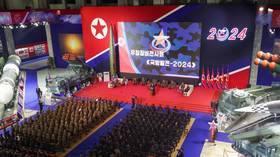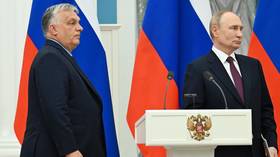Russia and US ink historic START paper
Prague has witnessed a historic moment: the Russian and US leaders have signed a landmark treaty on reducing their nuclear stockpiles.
New START treaty fully maintains the balance of interests between Russia and the US and will open a new page in the relations between the two countries, President Dmitry Medvedev said, speaking after the historic signing in Prague.
“As a result of hard work we have created a treaty that fully complies with the interests of both Russia and the US,” President Medvedev said. “And the most important thing is that there are no winners or losers. It's a win-win situation; both sides are winners as they have improved their security. And our victory is a victory for the whole international community. The new deal improves global strategic stability. At the same time it takes our relations with the US to a whole new level.”
Russia has been strongly insisting on linking defensive and offensive weapons in the treaty. However, while the offensive weapons have been limited in concrete figures, the defensive arsenal has been left untouched.
The US has pointed out the new treaty does not limit its missile defense projects – something Russia is wary of, especially after the previous Bush era plans to deploy parts of the system just kilometers from its border in Eastern Europe.
“At the moment, both sides are satisfied with the statements on which the signed treaty is based. And we will implement the treaty on that basis. Indeed, we are worried about the future of anti-missile defense because it is connected with our military potential. So we will keep an eye on it,” Dmitry Medvedev said.
Russia reserves the right to quit the treaty if the United States builds up its missile defense capabilities.
The two Presidents have agreed on a joint threat assessment – something that Russia has also been long calling for.
“President Medvedev and I agreed to expand our discussions on missile defense. This will include regular exchanges of information about our threat assessments as well as a completion of a joint assessment of emerging ballistic missiles. And as these assessments are completed I look forward to launching a serious dialogue about Russian-American operation on missile defense.”
The deal is also aimed at stopping the spread of atomic weapons around the world.
The 160-page document will oblige both sides to reduce their strategic offensive arms arsenal by one third. The deal limits the possession of warheads to 1550, deployed ballistic missiles to 700 and deployed and non-deployed missile-launchers to 800.
These numbers are significant and there could even be further reductions in the future, independent arms analyst, Dmitry Evstafiev told RT.
“The fact that we create a new spirit in bilateral relations is very important because that spirit can be transferred to other sides of bilateral co-operation, and if that spirit is preserved we can even go to lower numbers, where [the weapons] will mean less than now,” Evstafiev said.
By signing the historic document, Russia and the United States are showing their major intentions of a large-scale strategic offensive arms cut.
The pathway towards the historic moment of putting pens to paper was a long and thorny one, involving intense talks between the two delegations and the two Presidents themselves.
After inking the paper, another lengthy and delicate process is in store for the two countries – ratification of the treaty in their parliaments. And that is where another hurdle could arise, as the American Senate seems to be divided over the deal. 41 senators of 100 oppose the document, saying they would only support it if the current offensive system is modernized.
STARTing over
The new document comes in place of the previous START-1 deal, which was signed two decades ago in the midst of the Cold War between the United States and the USSR. And still came too little too late, says Pavel Palashchenko, who was Mikhail Gorbachev's translator.
“The treaty could have been signed under Reagan and Reagan wanted to sign it. The main parameters of the treaty have been prepared but there were others in the administration who wanted to bleed the Soviet Union a little longer with the arms race and therefore it didn’t happen and then under George Bush [Senior] it dragged out a little too long,” Palashchenko said.
Evgeny Buzhinsky witnessed the nuclear arms race between the two and was one of those in charge of reducing potential of the two nuclear superpowers. He worked on the START-1 treaty and took part in talks on the new replacement deal. The difference is immense, he says.
“We’re no longer enemies. We’re partners. We face common threats. So someone could even ask, ‘Why do we need any arms reduction treaties at all?’! The aim of any such treaty is not just about cutting stockpiles, but about transparency in relations. It's better to have an arms control deal in place than to spy on each other,” Buzhinsky says.
Spying was not the priority even after the new START deal missed its planned start in December last year, when the previous agreement expired. And despite gloomy forecasts from some, the world did not fall apart.
“Control, but trust – this is the essence of the philosophy in the area of verification, which has been implemented in this treaty,” says Russia’s Deputy Foreign Minister, Sergey Ryabkov. “We can check our partner when it’s necessary, but at the same time we do not intend to build a system that is even closer to the one which was in place when the cold war type of relationship dominated our arms control agreements with the US.”
Both sides agree they’ve made concessions on the new treaty, but after lengthy bargaining, the final result has been judged to be a balanced deal.
“START-1 was biased in favor of the Americans. And that was because Gorbachev and Shevardnadze were lobbying for the US interests. This wasn’t the case this time. Our negotiators could work stress-free. They had the support of the Foreign Ministry and there has been no pressure at all from the Kremlin,” Colonel General Leonid Ivashov from Academy of Geopolitical Problems says.
The new START treaty does not draw a line between winners and losers. Both sides come out as winners by moving towards a world free of nuclear weapons. By signing the new reduction treaty, Russia and America are leading by example. The question now is whether or not other nations will follow in their footsteps.


